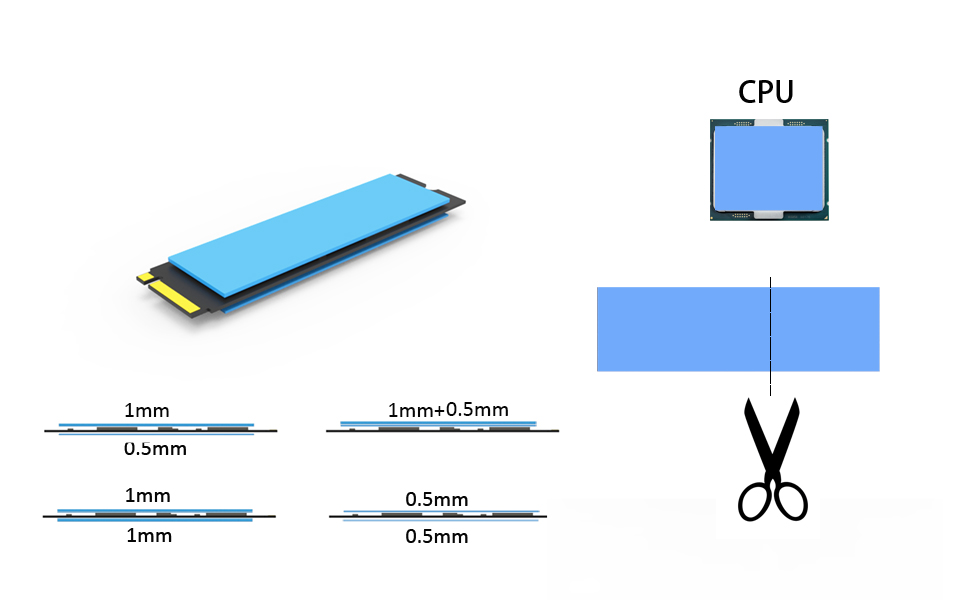
Overheating of M.2 PCIe NVMe SSD
1) We all like M.2 PCIe NVMe SSD, because it bring faster speeds. Most of M.2 PCIe NVMe SSD is PCIE 3.0 X4 interface ( reading speed at around 3500MB/s and writing speed at 3500MB/s). In addition, the size of the M.2 SSD is compact, most are 22x80mm.
2) Faster speed and compact SSD, but easily reach temperatures in excess of 80°C (the intended operating range for most NVMe SSDs is between 0°C and 70°C).
3) Many tests have proven that, long-term overheating has adverse effects on performance, data integrity and longevity of M.2 PCIe NVMe SSD.
4) How to design a reasonable cooling solution?

Why M.2 Thermal Pad?
1) We know that common heat dissipation schemes include metal heat conduction, fan cooling, and water cooling. But all cooling solutions require an intermediate medium, which can quickly conduct heat to the cooling equipment.
2) Thermal pad is the idea medium for featurs: electrical insulation,wear resistant, anti static, fire retardant, buffering, no toxic, odorless, no corrosion, no stimulation, no damage to metal materials, 4KV breakdown voltage, wide use of temperature,in -40 ? -200 ? range does not melt.
3) Even if the surface of M.2 SSD is not flat, M.2 silicone thermal pad (20x76mm area) can cover the entire surface and cover closely all the heating electronic components.
4) Silicone thermal pad absorbs most of the heat, and quickly conduct to heat sink. Heat is quickly dissipated.

Used with Aluminum Heatsink
1) A complete cooling solution includes silicone thermal pad and heat sink ( Aluminum heatsink or Fan or Water cooling).
2) Although thermal pad conductivity is only 2.0 W/mk, lower than aluminum (237 W/mk), but more higher than air, which is only 0.024 W/mk.
3) Silicone thermal pad is a commonly used intermediate medium and has been widely used in M.2 SSD, CPU , GPU and other IC chipset.

Flexible placement
1) 5 pieces of 20x76x1mm sheet and 5 pieces of 20x76x0.5mm sheet;
2) Placement on the upper and lower surfaces of the device or stacked as required;
3) Or you can use scissors to cut the specific size for CPU or GPU placement.










